Clancy Tucker's Blog, page 175
September 18, 2017
19 September 2017 - WOMEN IN WORLD WAR 11
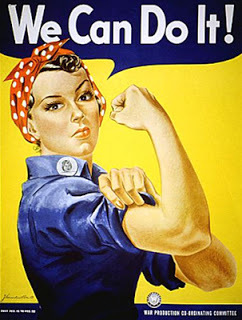
WOMEN IN WORLD WAR 11
G'day folks,
During World War II, some 350,000 women served in the U.S. Armed Forces, both at home and abroad. They included the Women's Airforce Service Pilots, who on March 10, 2010, were awarded the prestigious Congressional Gold Medal.
During World War II, some 350,000 women served in the U.S. Armed Forces, both at home and abroad. They included the Women’s Airforce Service Pilots, who on March 10, 2010, were awarded the prestigious Congressional Gold Medal. Meanwhile, widespread male enlistment left gaping holes in the industrial labor force. Between 1940 and 1945, the female percentage of the U.S. workforce increased from 27 percent to nearly 37 percent, and by 1945 nearly one out of every four married women worked outside the home.

Women in the Armed Forces
In addition to factory work and other home front jobs, some 350,000 women joined the Armed Services, serving at home and abroad. At the urging of First Lady Eleanor Roosevelt and women’s groups, and impressed by the British use of women in service, General George Marshall supported the idea of introducing a women’s service branch into the Army. In May 1942, Congress instituted the Women’s Auxiliary Army Corps, later upgraded to the Women’s Army Corps, which had full military status. Its members, known as WACs, worked in more than 200 non-combatant jobs stateside and in every theater of the war. By 1945, there were more than 100,000 WACs and 6,000 female officers. In the Navy, members of Women Accepted for Volunteer Emergency Service (WAVES) held the same status as naval reservists and provided support stateside. The Coast Guard and Marine Corps soon followed suit, though in smaller numbers.
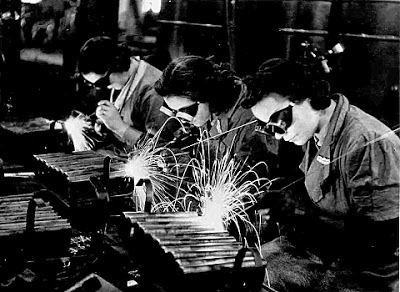
One of the lesser-known roles women played in the war effort was provided by the Women’s Airforce Service Pilots, or WASPs. These women, each of whom had already obtained their pilot’s license prior to service, became the first women to fly American military aircraft. They ferried planes from factories to bases, transporting cargo and participating in simulation strafing and target missions, accumulating more than 60 million miles in flight distances and freeing thousands of male U.S. pilots for active duty in World War II. More than 1,000 WASPs served, and 38 of them lost their lives during the war.
Considered civil service employees and without official military status, these fallen WASPs were granted no military honors or benefits, and it wasn’t until 1977 that the WASPs received full military status. On March 10, 2010, at a ceremony in the Capitol, the WASPS received the Congressional Gold Medal, one of the highest civilian honors. More than 200 former pilots attended the event, many wearing their World War II-era uniforms.
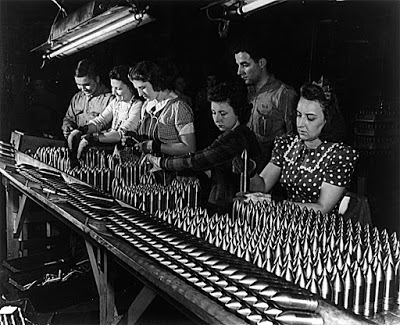
“Rosie the Riveter”
While women worked in a variety of positions previously closed to them, the aviation industry saw the greatest increase in female workers. More than 310,000 women worked in the U.S. aircraft industry in 1943, representing 65 percent of the industry’s total workforce (compared to just 1 percent in the pre-war years). The munitions industry also heavily recruited women workers, as represented by the U.S. government’s “Rosie the Riveter” propaganda campaign. Based in small part on a real-life munitions worker, but primarily a fictitious character, the strong, bandanna-clad Rosie became one of the most successful recruitment tools in American history, and the most iconic image of working women during World War II.
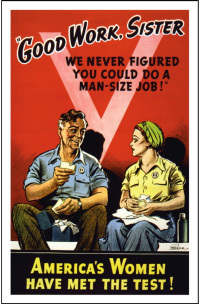
In movies, newspapers, posters, photographs, articles and even a Norman Rockwell-painted Saturday Evening Post cover, the Rosie the Riveter campaign stressed the patriotic need for women to enter the work force—and they did, in huge numbers. Though women were crucial to the war effort, their pay continued to lag far behind their male counterparts: Female workers rarely earned more than 50 percent of male wages.

Clancy's comment: Go, girls. Love ya work! What a shame they didn't pay you what you were worth.
I'm ...
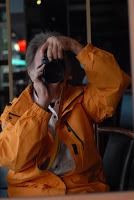

Published on September 18, 2017 13:41
September 17, 2017
18 September 2017 - JOSEPH STALIN
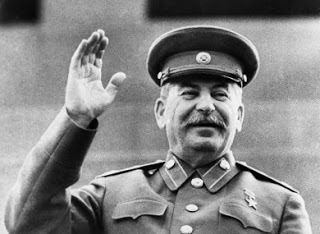
JOSEPH STALIN
G'day folks,
Joseph Vissarionovich Stalin was a Soviet revolutionary and political leader. He governed the Soviet Union as dictator from the mid-1920s until his death in 1953, serving as Premier of the Soviet Union.
Joseph Stalin (1878-1953) was the dictator of the Union of Soviet Socialist Republics (USSR) from 1929 to 1953. Under Stalin, the Soviet Union was transformed from a peasant society into an industrial and military superpower. However, he ruled by terror, and millions of his own citizens died during his brutal reign. Born into poverty, Stalin became involved in revolutionary politics, as well as criminal activities, as a young man. After Bolshevik leader Vladimir Lenin (1870-1924) died, Stalin outmaneuvered his rivals for control of the party. Once in power, he collectivized farming and had potential enemies executed or sent to forced labor camps. Stalin aligned with the United States and Britain in World War II (1939-1945) but afterward engaged in an increasingly tense relationship with the West known as the Cold War (1946-1991). After his death, the Soviets initiated a de-Stalinization process.
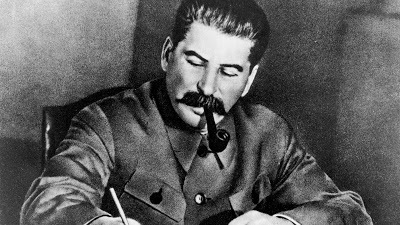
Joseph Stalin’s Early Years and Family
Joseph Stalin was born Josef Vissarionovich Djugashvili on December 18, 1878, or December 6, 1878, according to the Old Style Julian calendar (although he later invented a new birth date for himself: December 21, 1879), in the small town of Gori, Georgia,then part of the Russian empire. When he was in his 30s, he took the name Stalin, from the Russian for “man of steel.”
Stalin grew up poor and an only child. His father was a shoemaker and alcoholic who beat his son, and his mother was a laundress. As a boy, Stalin contracted smallpox, which left him with lifelong facial scars. As a teen, he earned a scholarship to attend a seminary in the nearby city of Tblisi and study for the priesthood in the Georgian Orthodox Church. While there he began secretly reading the work of German social philosopher and “Communist Manifesto” author Karl Marx,becoming interested in the revolutionary movement against the Russian monarchy. In 1899, Stalin was expelled from the seminary for missing exams, although he claimed it was for Marxist propaganda.
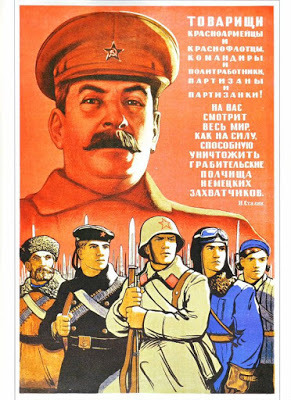
After leaving school, Stalin became an underground political agitator, taking part in labor demonstrations and strikes. He adopted the name Koba, after a fictional Georgian outlaw-hero, and joined the more militant wing of the Marxist Social Democratic movement, the Bolsheviks, led by Vladimir Lenin. Stalin also became involved in various criminal activities, including bank heists, the proceeds from which were used to help fund the Bolshevik Party. He was arrested multiple times between 1902 and 1913, and subjected to imprisonment and exile in Siberia.
In 1906, Stalin married Ekaterina “Kato” Svanidze (1885-1907), a seamstress. The couple had one son, Yakov (1907-1943), who died as a prisoner in Germany during World War II. Ekaterina perished from typhus when her son was an infant. In 1918 (some sources cite 1919), Stalin married his second wife, Nadezhda “Nadya” Alliluyeva (1901-1932), the daughter of a Russian revolutionary. They had two children, a boy and a girl. Nadezhda committed suicide in her early 30s. Stalin also fathered several children out of wedlock.
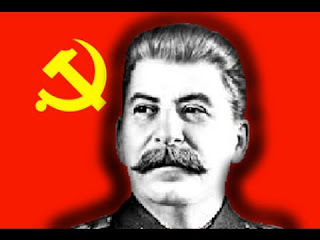 Joseph Stalin’s Rise to Power In 1912, Lenin, then in exile in Switzerland, appointed Joseph Stalin to serve on the first Central Committee of the Bolshevik Party. Three years later, in November 1917, the Bolsheviks seized power in Russia. The Soviet Union was founded in 1922, with Lenin as its first leader. During these years, Stalin had continued to move up the party ladder, and in 1922 he became secretary general of the Central Committee of the Communist Party, a role that enabled him to appoint his allies to government jobs and grow a base of political support.
Joseph Stalin’s Rise to Power In 1912, Lenin, then in exile in Switzerland, appointed Joseph Stalin to serve on the first Central Committee of the Bolshevik Party. Three years later, in November 1917, the Bolsheviks seized power in Russia. The Soviet Union was founded in 1922, with Lenin as its first leader. During these years, Stalin had continued to move up the party ladder, and in 1922 he became secretary general of the Central Committee of the Communist Party, a role that enabled him to appoint his allies to government jobs and grow a base of political support.After Lenin died in 1924, Stalin eventually outmaneuvered his rivals and won the power struggle for control of the Communist Party. By the late 1920s, he had become dictator of the Soviet Union.
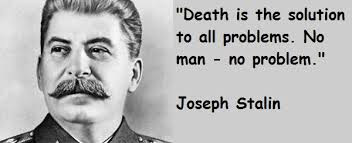
The Soviet Union Under Joseph Stalin Starting in the late 1920s, Joseph Stalin launched a series of five-year plans intended to transform the Soviet Union from a peasant society into an industrial superpower. His development plan was centered on government control of the economy and included the forced collectivization of Soviet agriculture, in which the government took control of farms. Millions of farmers refused to cooperate with Stalin’s orders and were shot or exiled as punishment. The forced collectivization also led to widespread famine across the Soviet Union that killed millions.
Stalin ruled by terror and with a totalitarian grip in order to eliminate anyone who might oppose him. He expanded the powers of the secret police, encouraged citizens to spy on one another and had millions of people killed or sent to the Gulag system of forced labor camps. During the second half of the 1930s, Stalin instituted the Great Purge, a series of campaigns designed to rid the Communist Party, the military and other parts of Soviet society from those he considered a threat.
Additionally, Stalin built a cult of personality around himself in the Soviet Union. Cities were renamed in his honor. Soviet history books were rewritten to give him a more prominent role in the revolution and mythologize other aspects of his life. He was the subject of flattering artwork, literature and music, and his name became part of the Soviet national anthem. His government also controlled the Soviet media.

Joseph Stalin and World War II
In 1939, on the eve of World War II, Joseph Stalin and German dictator Adolf Hitler(1889-1945) signed a nonaggression pact. Stalin then proceeded to annex parts of Poland and Romania, as well as the Baltic states of Estonia, Latvia and Lithuania. He also launched an invasion of Finland. Then, in June 1941, Germany broke the Nazi-Soviet pact and invaded the USSR, making significant early inroads. (Stalin had ignored warnings from the Americans and the British, as well as his own intelligence agents, about a potential invasion, and the Soviets were not prepared for war.) As German troops approached the Soviet capital of Moscow, Stalin remained there and directed a scorched earth defensive policy, destroying any supplies or infrastructure that might benefit the enemy. The tide turned for the Soviets with the Battle of Stalingrad, from August 1942 to February 1943, during which the Red Army defeated the Germans and eventually drove them from Russia.
As the war progressed, Stalin participated in the major Allied conferences, including those in Tehran (1943) and Yalta (1945). His iron will and deft political skills enabled him to play the loyal ally while never abandoning his vision of an expanded postwar Soviet empire.
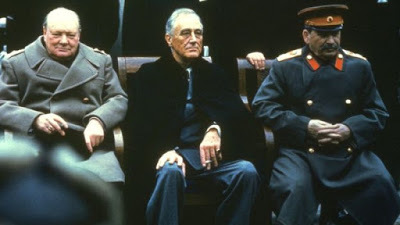
Joseph Stalin’s Later Years
Joseph Stalin did not mellow with age: He prosecuted a reign of terror, purges, executions, exiles to labor camps and persecution in the postwar USSR, suppressing all dissent and anything that smacked of foreign–especially Western–influence. He established communist governments throughout Eastern Europe, and in 1949 led the Soviets into the nuclear age by exploding an atomic bomb. In 1950, he gave North Korea’s communist leader Kim Il Sung (1912-1994) permission to invade United States-supported South Korea, an event that triggered the Korean War.
Stalin, who grew increasingly paranoid in his later years, died on March 5, 1953, at age 74, after suffering a stroke. His body was embalmed and preserved in Lenin’s mausoleum in Moscow’s Red Square until 1961, when it was removed and buried near the Kremlin walls as part of the de-Stalinization process initiated by Stalin’s successor Nikita Khrushchev (1894-1971).
By some estimates, he was responsible for the deaths of 20 million people during his brutal rule.

Clancy's comment: Apparently I was almost named Joseph, after this man. It probably had a lot to do with the fact that I was born on May Day. Mm ... Any wonder I became an activist?
I'm ...


Published on September 17, 2017 14:35
September 16, 2017
17 September 2017 - DECORATIVE WALLS

DECORATIVE WALLS
G'day folks,
What do you have on the walls of your home? Mm ... Some of these examples will stun you. However, some remind me of the room in which I am sitting as I write this post.
Check out these walls ....












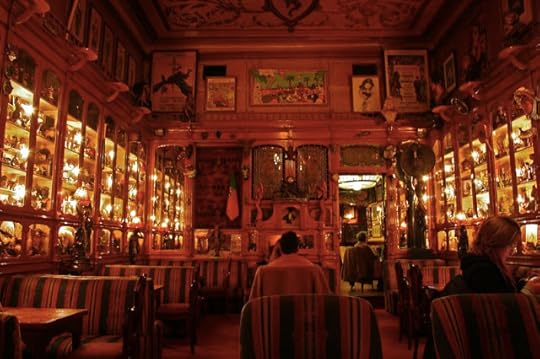





Clancy's comment: I'd hate to have to dust some of these rooms.
I'm ...
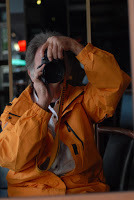

Published on September 16, 2017 15:21
September 15, 2017
16 September 2017 - JOHN JOB CREW BRADFIELD
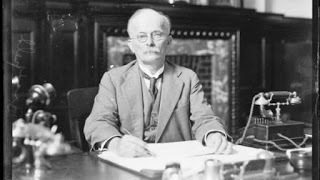
JOHN JOB CREW BRADFIELD
G'day folks,
Dr. John Jacob "Job" Crew Bradfield CMG was a prominent Australian engineer who is best known for his work overseeing the design and building of the Sydney Harbour Bridge.
John Job Crew Bradfield (1867-1943), civil engineer, was born on 26 December 1867 at Sandgate, Queensland, fourth son of John Edward Bradfield, labourer and Crimean War veteran, and his wife Maria, née Crew. His parents, brothers and four sisters had arrived in Brisbane from England in 1857. Educated at the North Ipswich State School and the Ipswich Grammar School on a scholarship, Bradfield passed the Sydney senior public examination in 1885, gaining the medal for chemistry. Dux of his school, he won a Queensland government university exhibition and in 1886 matriculated at the University of Sydney. From St Andrew's College, he continued his brilliant academic career, graduating B.E. with the University Gold Medal in 1889.

From May, Bradfield worked as a draftsman under the chief engineer, railways, in Brisbane. On 28 May 1891 at St John's Pro-Cathedral he married Edith Jenkins. That year he was retrenched and joined the New South Wales Department of Public Works as a temporary draftsman, becoming permanent in 1895. An associate from 1893 of the Institution of Civil Engineers, London, he graduated M.E. with first-class honours and the University Medal in 1896. He had been a founder of the Sydney University Engineering Society in 1895 and was president in 1902-03 and 1919-20. In his 1903 presidential address he drew attention to the competition, initiated in 1900, for the design of a bridge across Sydney Harbour; there had been agitation for a bridge or tunnel since the 1880s.
Bradfield was associated with a great range of engineering work including the Cataract Dam near Sydney and the Burrinjuck Dam which formed part of the Murrumbidgee Irrigation Area. In January 1909 he was promoted assistant engineer at a salary of £400. He had worked on some important projects, but he was not his own master. In August 1910 he applied for the foundation chair of engineering in the new University of Queensland, but was unsuccessful despite twenty-two testimonials from senior public servants, academics, engineers and architects such as Norman Selfe, (Sir) George Knibbs, (Sir) Edgeworth David, Robert Irvine and (Sir) John Sulman.
In February 1912 in evidence to the Parliamentary Standing Committee on Public Works Bradfield proposed a suspension bridge to connect Sydney and North Sydney, but in April also submitted a cantilever design. Next year the committee recommended acceptance of his scheme for construction of a cantilever bridge from Dawes Point to Milsons Point. In 1913 his title was changed to chief engineer for metropolitan railway construction.
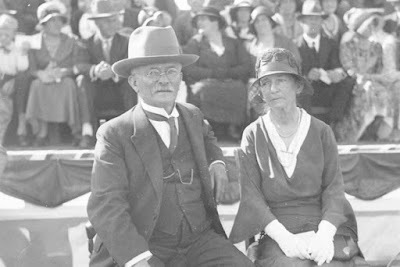
Plans for a city railway were already well developed by his predecessors when, in 1914, Bradfield went overseas to investigate new approaches to metropolitan railway construction. Early next year he reported on the proposed electric lines for the city of Sydney. Aware that a bill was soon to come before parliament, he went to considerable effort to show the practicality of his scheme. He was at his most convincing in this report, as in all his later publications, when he managed to combine both the functional and the 'city beautiful' aspects of his plan. In the debates on the bill, his engineering talents were praised by both sides. However most sections of his scheme were postponed as a general war economy measure.
In October 1913, with J. D. Fitzgerald and Sulman, Bradfield had attended the inaugural meeting of the Town Planning Association of New South Wales; at the first Australian Town Planning Conference and Exhibition held in Adelaide in October 1917, he argued in his paper, 'The transit problems of greater Sydney', that his scheme of suburban electrification would benefit large property owners, new home purchasers and the general public by opening up new land, with quicker transport and cheaper fares. He predicted that Sydney's population would reach at least 2,226,000 by 1950. Bradfield maintained—apparently without reprimand from government—an extraordinary barrage of articles and public addresses advocating his plan.
In March 1922 he was sent overseas to inquire into tenders for a cantilever bridge. Later that year the Harbour Bridge Act was carried; Bradfield had advised R. T. Ball to amend the bill to provide for either a cantilever or an arch bridge, according to his specifications, as developments in light steel made the latter possible. In 1924 he recommended that the government should accept the tender of Dorman Long & Co. of Middlesbrough, England.
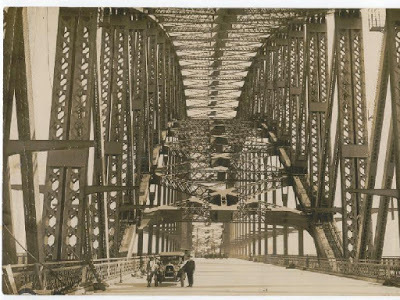
The easy passage of the Harbour Bridge Act undoubtedly increased Bradfield's determination to promote other sections of his scheme. By mid-1923 the public could see results of the Bradfield plan in the massive excavations and tunnel-building in Hyde Park for the underground railway. In 1924 he received the first doctorate of science in engineering awarded by the University of Sydney, for a thesis entitled 'The city and suburban electric railways and the Sydney Harbour Bridge'. One of his examiners, Sir John Monash, wrote: 'these works are undoubtedly of exceptional magnitude, being in some respects unique in Engineering practice'. The opening of the St James and Museum stations and the new section of the Central Station at Chalmers Street on 20 December 1926 marked his plan's first result. In February 1930 he was curtly retired by the railway commissioners; however cabinet preserved his status in the Department of Public Works and £3000 salary, and he continued to represent the government in dealings with the contractors and to supervise construction of the bridge.
During this extended period of public and parliamentary exposure Bradfield's expertise was never questioned. But in 1929 controversy flared over who really designed the bridge, inspired by a series of articles in the Sydney Morning Herald by (Sir) Ralph Freeman (1880-1950), consulting engineer to Dorman Long, who was described by the Herald as 'the designer' of the bridge and who conveyed the same impression in his articles. Ball, now minister for lands, said it was difficult to determine what was really meant by the term 'designer'; he would describe the bridge as a Bradfield-Dorman Long design.
E. A. Buttenshaw called for a report on the matter from Bradfield, who wrote, 'I originated the cantilever bridge design recommended by the public works committee in 1913 and subsequently the arch bridge design of 1650 feet span'; he went on to say Freeman was not the designer and that tenders were called on his own design. The controversy was never finally resolved, but when Bradfield retired in 1933, the director of public works stated that Bradfield was the designer of the bridge and that 'no other person by any stretch of imagination, can claim that distinction'. However, modifications had been made to the design after Freeman's visit in 1926, and in 1932 Dorman Long threatened to sue the government if it erected a plaque naming Bradfield as the designer. One informed view was that the 'detail design was entrusted to Lawrence Ennis who became first Honorary Member of the Institution [of Engineers, Australia] in 1932'. Professor Crawford Munroalso considered that Bradfield 'did not design the Sydney Harbour Bridge which we now behold'.
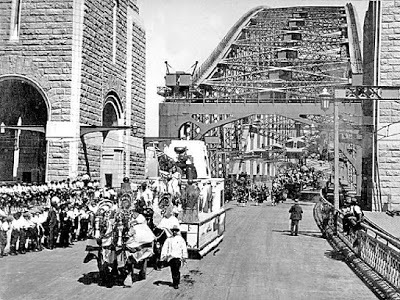
The highlight of Bradfield's career undoubtedly was the opening of the bridge on 19 March 1932 (despite the antics of Captain de Groot of the New Guard). He was a member of the official party and the governor Sir Philip Gamenamed the bridge highway after him. The Depression was to suspend the Bradfield plan for well over a decade, and the construction of the Eastern Suburbs railway was far in the future. In 1933 he was appointed C.M.G. and he retired from the public service in July.
In 1934 Bradfield was appointed consulting engineer for the design, fabrication and construction of a bridge and approaches across the Brisbane River from Kangaroo Point to Bowen Terrace. The Story Bridge was a symmetrical cantilever of 1463 ft (446 m) in length, with a clear span of 924 ft (282 m); construction began in 1935 and the bridge was opened in 1940. He was also technical adviser to the constructors of the Hornibrook Highway near Brisbane and helped to plan and design the University of Queensland's new site at St Lucia; the university admitted him to an ad eund. doctorate of engineering in 1935.
Although in most respects severely pragmatic, Bradfield had a penchant for the grandiose that was revealed in some of his wilder plans for high-rise office blocks astride the southern approaches of the Harbour Bridge and in his proposals for a massive water-diversion scheme in Queensland. In his early seventies he put considerable time and energy into publicizing a plan to irrigate the western districts of Queensland and part of Central Australia by damming certain coastal rivers and running water-pipes through the Great Dividing Range. Aspects of this scheme, and especially his lack of scientific evidence, were publicly attacked by G. W. Leeper of the school of agricultural science at the University of Melbourne.
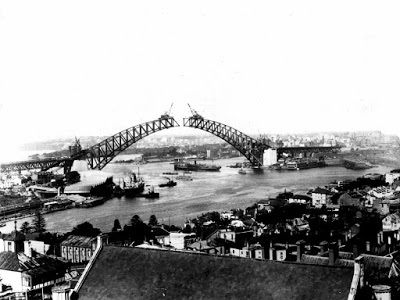
Bradfield had wide interests within his chosen profession. Early in 1916 he was appointed by the New South Wales government to a committee to establish and manage a school of aviation at Richmond. In 1919 he was a founder of the Institution of Engineers, Australia, and as a councillor in 1920-24 and 1927 represented it on the Australian Commonwealth Standards Association; he was also a member of the Australian National Research Council. He always maintained close links with the University of Sydney: he was a member of its senate in 1913-43, a trustee of Wesley College in 1917-43, a councillor of the Women's College from 1931, and from 1942 deputy chancellor. He was a member of the University Club and from 1922 of the Royal Society of New South Wales.
Bradfield regularly attended St John's Church of England, Gordon, and was a keen gardener. He died at his home at Gordon on 23 September 1943 and was buried in St John's cemetery; a memorial service was held at St Andrew's Cathedral. He was survived by his wife, five sons and a daughter; his youngest son Keith inherited his father's interest in aviation and was assistant director general, Department of Civil Aviation, in 1957-68. Bradfield's estate was valued for probate at £13,843: his salary had been 'by no means commensurate' with his importance. A portrait by F. W. Leistis at the University of Sydney, and others by Gerard Nathan and Joseph Wolinski are held by descendants.
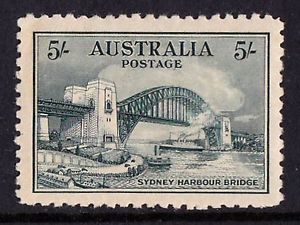
Bradfield was small in stature, with a quiet and humorous disposition. His life was one of total professional zeal and commitment, and he became an outstanding Australian engineer in his generation. Florence Taylornoted his 'tremendous faith in his ability which is not a conceit when there is an enormous knowledge behind that faith and ability'. He was honoured by the award of the (Sir) Peter Nicol Russell Medal by the Institution of Engineers, Australia, in 1932, the (W. C.) KernotMemorial Medal by the University of Melbourne in 1933, and the Telford Gold Medal of the Institution of Civil Engineers, London, in 1934. His vision of Sydney captured the imagination of many, including J. T. Lang who later wrote: 'Bradfield wanted to be the Napoleon III of Sydney. He wanted to pull down everything in the way of his grandiose schemes. He was always thinking of the future. He was probably the first man to plan for Sydney as a city of two million people'.

Clancy's comment: What an extraordinary construction it was for the time. By the way, the Sydney Harbour Bridge is known in Australia as 'The coat hanger'.
I'm ...
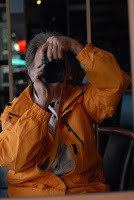

Published on September 15, 2017 14:28
September 14, 2017
15 September 2017 - FACTS ABOUT GOATS

FACTS ABOUT GOATS
G'day folk,
Here are a few things you may not have known about these creatures. I've owned two of them and I like them because they can clean up vast areas of things like unruly blackberries.

The domestic goat is a subspecies of goat domesticated from the wild goat of southwest Asia and Eastern Europe. The goat is a member of the family Bovidae and is closely related to the sheep as both are in the goat-antelope subfamily Caprinae.
 Gestation period: 150 days
Gestation period: 150 days Lifespan: 15 – 18 years
Mass: 20 – 140 kg (Adult)
Height: 41 – 58 cm (Adult, At Shoulder)

Goats are social animals, however unlike sheep, who they are closely related to, they are not flock-orientated.Goats communicate with each other by bleating. Mothers will often call to their young (kids) to ensure they stay close-by. Mother and kid goats recognise each other’s calls soon after the mothers give birth.Kids can follow their mothers almost immediately after being born. They are very close to their mothers and are weaned after around 6 months.Goats are very intelligent and curious animals. Their inquisitive nature is exemplified in their constant desire to explore and investigate anything unfamiliar which they come across.Goats have excellent coordination. They have great balance and are thus able to survive in precarious areas such as steep mountains. They can even climb trees and some species can jump over 5 feet high.


Clancy's comment: Amazing animals, and their young are very cute. My two goats always found the highest point to stand; no matter how high it was.
I'm ....


Published on September 14, 2017 15:21
September 13, 2017
14 September 2017 - ADVICE TO GOLFERS

ADVICE TO GOLFERS
G'day folks,
Welcome to all you golfers. Take notice ...
















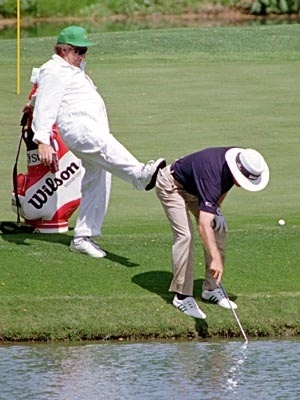

Clancy's comment: I bet you golfers are glad you read this post.
I'm ...


Published on September 13, 2017 14:07
September 12, 2017
13 September 2017 - RICK SPRINGFIELD
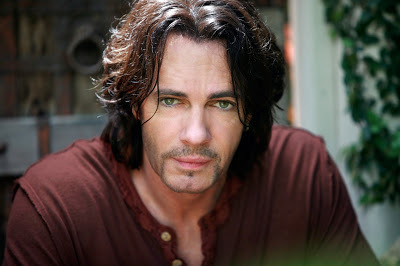
RICK SPRINGFIELD
G'day folks,
Richard Lewis Springthorpe is an Australian singer, instrumentalist, songwriter, actor and author, known by his stage name Rick Springfield.
Rick Springfield became a teen heartthrob in the 1980s with his hit song "Jessie's Girl" and his stint as a handsome doctor on General Hospital.
Synopsis
Rick Springfield was born on August 23, 1949, began playing in bands in his native Australia at an early age. The success of his solo debut brought him to Los Angeles, where he acted in television roles and tried to make it big in music. While playing a handsome doctor on General Hospital, he also released an album that included the hit "Jesse's Girl." Since then, he's released several more albums and written two books.
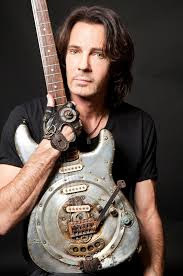
Early Years
Born Richard Lewis Springthorpe, on August 23, 1949, in Sydney, Australia, Rick Springfield is the son of an Australian army officer. Springfield frequently moved throughout his childhood, living in both Australia and England. While in high school, he developed an affinity for music, began playing the guitar and formed a band called the Jordy Boys. He went on to perform with the groups Rock House and Zoot before launching a solo singing career with the 1971 Australian hit "Speak to the Sky."
The Move to America
After an auspicious solo debut in Australia, Springfield was signed by the American-based label Capitol Records. In 1972, he moved to Los Angeles and released the album Beginnings. Featuring many of his previous Australian hits, including a new version of "Speak to the Sky," the album fared well on the charts. But to Springfield's dismay, critics immediately labeled him the next teen pop idol. In 1973, in an attempt to shed his bubblegum image, Springfield moved to Columbia Records, where he recorded the disappointing LP Comic Book Heroes.

General Hospital and Jesse's Girl
In the mid-1970s, Springfield temporarily shelved his music career and concentrated on acting, appearing on several popular television programs like The Rockford Files, Wonder Woman, The Incredible Hulk and The Six-Million Dollar Man.
In 1980, he managed to secure a recording contract with RCA, and while recording with the label, Springfield was cast as the dashing Dr. Noah Drake on the popular daytime drama General Hospital. As his popularity skyrocketed among soap opera fans, Springfield released the album Working Class Dogs, which yielded the now-classic singles "I've Done Everything For You" and "Jessie's Girl." The latter song earned him a Grammy Award and became known as an anthem of the 1980s—a time when his feathered hair, tightly suited body and boyish face became hallmarks of the era.
Springfield recorded the well-received albums Success Hasn't Spoiled Me Yet (1982) and Living in Oz (1983) before making his cinematic debut in the romantic drama Hard to Hold (1984). While his female fans flocked to theaters, the film received lukewarm reviews from most critics.
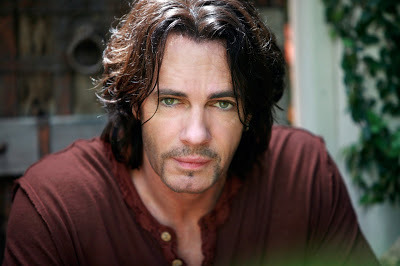
Later Work Throughout the 1990s, Springfield's work mainly consisted of made-for-TV movies, including Dead Reckoning (1990), Silent Motive (1991), A Change of Place(1994) and Dying to Dance (1999). Later that year, he released his first new album in over a decade, Karma, which received generally positive reviews.
In 2010, Springfield saw the publication of his autobiography, Late, Late at Night, and his first work of fiction, Magnificent Vibration was published in 2014. Both books made it onto the New York Times bestseller list, and Late, Late at Night was named by Rolling Stone one of the top 25 rock memoirs of all-time.
For his decades of output and enduring popularity, Springfield received a star on the Hollywood Walk of Fame in May 2014. Later in 2014, Springfield landed a role on the dark HBO drama True Detective, setting the actor up for yet another re-emergence.

Clancy's comment: Another Aussie who has done well.
I'm ...


Published on September 12, 2017 15:19
September 11, 2017
12 September 2017 - DESERTED HIGH-CLASS CARS IN DUBAI

DESERTED HIGH-CLASS CARS IN DUBAI
G'day folks,
Ah ... The rich have fallen by the wayside.
S ome cities have a litter problem, some suffer from high crime rates and others might have a lack of affordable housing. And then you have Dubai, which for the last several years has been facing the unusual problem of high end sports cars being abandoned and left to gather thick layers of dust at airport car parks and on the roadside across the city.

If you’ve ever been to Dubai or anywhere in the United Arab Emirates, you will have noticed they have a serious car culture out there, with a particular preference for the latest and greatest in high-end super cars. But like the rest of the world, Dubai has fallen on hard times. Once the hub of the oil economy and the centre of a booming property market, foreigners, mostly British, invested in the red hot market. Newly wealthy ex-pats bought the latest Italian and German sports cars to complement their millionaire lifestyles– and then the global economic crisis came along and burst everybody’s bubble.

Thousands of the finest automobiles ever made are now being abandoned every year since Dubai’s financial meltdown, left by expatriates and locals alike who flee in a hurry because they face crippling debts. With big loans to repay to the banks (unpaid debt or even bouncing a cheque is a criminal offence in Dubai), the panicked car owners make their way to the airport at top speeds and leave their vehicles in the car park, hopping on the next flight out of there, never to return.

Ferraris, Porsches, BMWs, Mercedes are regularly abandoned at the car park of Dubai International Airport, some with loan documents and apology notes simply left on the windscreen and in some cases with the keys still in the ignition.

Last year, a Ferrari Enzo, one of only four hundred manufactured, was seized by police having spent several months in a car park collecting dust. The million dollar motor went on sale at auction alongside other Ferraris, Porsches, Range Rovers and Mercedes plucked from the roadside.


Clancy's comment: They have obviously bitten off more than they can chew. Do I feel sympathy for them? Nope. I'm a great believer in karma. Bring it on. What a pack of wimps.
I'm ...


Published on September 11, 2017 15:07
September 10, 2017
11 September 2017 - IRENA SENDLER - HERO OF THE WARSAW GHETTO
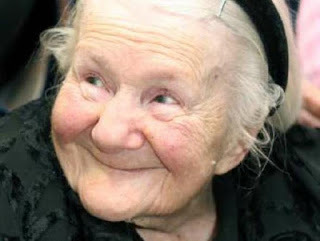 IRENA SENDLER - HERO OF THE WARSAW GHETTO -
IRENA SENDLER - HERO OF THE WARSAW GHETTO -G'day folks,
Welcome to some background on a courageous woman. Irena Sendler, also referred to as Irena Sendlerowa in Poland, nom de guerre "Jolanta", was a Polish nurse, humanitarian, and social worker who served in the Polish Underground in German-occupied Warsaw.
The Holocaust - the systematic annihilation of six million Jews - is a history of enduring horror and sorrow. The charred skeletons, the diabolic experiments, the death camps, the mass graves, the smoke from the chimneys ... In 1933 nine million Jews lived in the 21 countries of Europe that would be occupied by Germany during the war. By 1945 two out of every three European Jews had been killed by the Nazis. 1.5 million children were murdered. This figure includes more than 1.2 million Jewish children, tens of thousands of Gypsy children and thousands of handicapped children.
Yet there were acts of courage and human decency during the Holocaust - stories to bear witness to goodness, love and compassion. This is the story of an incredible woman and her amazing gift to mankind. Irena Sendler. An unfamiliar name to most people, but this remarkable woman defied the Nazis and saved 2,500 Jewish children by smuggling them out of the Warsaw Ghetto. As a health worker, she sneaked the children out between 1942 and 1943 to safe hiding places and found non-Jewish families to adopt them.
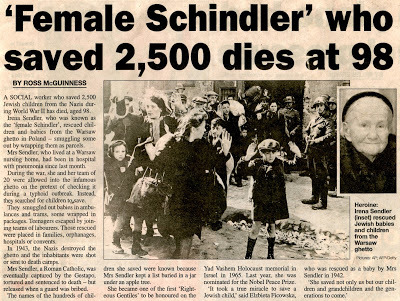
For many years Irena Sendler - white-haired, gentle and courageous - was living a modest existence in her Warsaw apartment. This unsung heroine passed away on Monday May 12th, 2008.
Her achievement went largely unnoticed for many years. Then the story was uncovered by four young students at Uniontown High School, in Kansas, who were the winners of the 2000 Kansas state National History Day competition by writing a play Life in a Jar about the heroic actions of Irena Sendler. The girls - Elizabeth Cambers, Megan Stewart, Sabrina Coons and Janice Underwood - have since gained international recognition, along with their teacher, Norman Conard. The presentation, seen in many venues in the United States and popularized by National Public Radio, C-SPAN and CBS, has brought Irena Sendlers story to a wider public. The students continue their prize-winning dramatic presentation Life in a Jar.
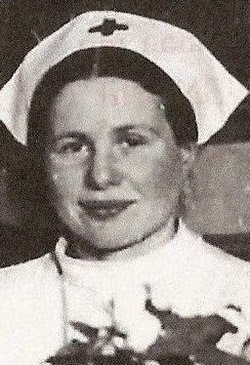
Irena Sendler was born in 1910 in Otwock, a town some 15 miles southeast of Warsaw. She was greatly influenced by her father who was one of the first Polish Socialists. As a doctor his patients were mostly poor Jews. In 1939, Germany invaded Poland, and the brutality of the Nazis accelerated with murder, violence and terror. At the time, Irena was a Senior Administrator in the Warsaw Social Welfare Department, which operated the canteens in every district of the city. Previously, the canteens provided meals, financial aid, and other services for orphans, the elderly, the poor and the destitute. Now, through Irena, the canteens also provided clothing, medicine and money for the Jews. They were registered under fictitious Christian names, and to prevent inspections, the Jewish families were reported as being afflicted with such highly infectious diseases as typhus and tuberculosis.
But in 1942, the Nazis herded hundreds of thousands of Jews into a 16-block area that came to be known as the Warsaw Ghetto. The Ghetto was sealed and the Jewish families ended up behind its walls, only to await certain death. Irena Sendler was so appalled by the conditions that she joined Zegota, the Council for Aid to Jews, organized by the Polish underground resistance movement, as one of its first recruits and directed the efforts to rescue Jewish children.

To be able to enter the Ghetto legally, Irena managed to be issued a pass from Warsaws Epidemic Control Department and she visited the Ghetto daily, reestablished contacts and brought food, medicines and clothing. But 5,000 people were dying a month from starvation and disease in the Ghetto, and she decided to help the Jewish children to get out.
For Irena Sendler, a young mother herself, persuading parents to part with their children was in itself a horrendous task. Finding families willing to shelter the children, and thereby willing to risk their life if the Nazis ever found out, was also not easy.
Irena Sendler, who wore a star armband as a sign of her solidarity to Jews, began smuggling children out in an ambulance. She recruited at least one person from each of the ten centers of the Social Welfare Department. With their help, she issued hundreds of false documents with forged signatures. Irena Sendler successfully smuggled almost 2,500 Jewish children to safety and gave them temporary new identities.
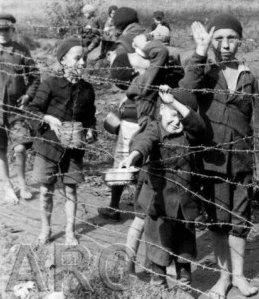
Some children were taken out in gunnysacks or body bags. Some were buried inside loads of goods. A mechanic took a baby out in his toolbox. Some kids were carried out in potato sacks, others were placed in coffins, some entered a church in the Ghetto which had two entrances. One entrance opened into the Ghetto, the other opened into the Aryan side of Warsaw. They entered the church as Jews and exited as Christians. "`Can you guarantee they will live?'" Irena later recalled the distraught parents asking. But she could only guarantee they would die if they stayed. "In my dreams," she said, "I still hear the cries when they left their parents."
Irena Sendler accomplished her incredible deeds with the active assistance of the church. "I sent most of the children to religious establishments," she recalled. "I knew I could count on the Sisters." Irena also had a remarkable record of cooperation when placing the youngsters: "No one ever refused to take a child from me," she said. The children were given false identities and placed in homes, orphanages and convents. Irena Sendler carefully noted, in coded form, the childrens original names and their new identities. She kept the only record of their true identities in jars buried beneath an apple tree in a neighbor's back yard, across the street from German barracks, hoping she could someday dig up the jars, locate the children and inform them of their past.
In all, the jars contained the names of 2,500 children ...
But the Nazis became aware of Irena's activities, and on October 20, 1943 she was arrested, imprisoned and tortured by the Gestapo, who broke her feet and legs. She ended up in the Pawiak Prison, but no one could break her spirit. Though she was the only one who knew the names and addresses of the families sheltering the Jewish children, she withstood the torture, that crippled her for life, refusing to betray either her associates or any of the Jewish children in hiding. Sentenced to death, Irena was saved at the last minute when Zegota members bribed one of the Gestapo agents to halt the execution. She escaped from prison but for the rest of the war she was pursued by the Nazis.
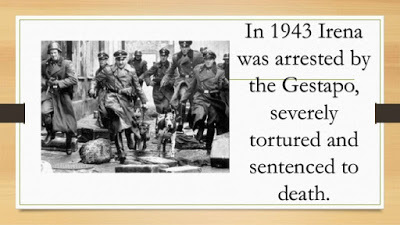
After the war she dug up the jars and used the notes to track down the 2,500 children she placed with adoptive families and to reunite them with relatives scattered across Europe. But most lost their families during the Holocaust in Nazi death camps. The children had known her only by her code name Jolanta. But years later, after she was honored for her wartime work, her picture appeared in a newspaper. "A man, a painter, telephoned me,"said Sendler, "`I remember your face,' he said. `It was you who took me out of the ghetto.' I had many calls like that!"
Irena Sendler did not think of herself as a hero. She claimed no credit for her actions. "I could have done more," she said. "This regret will follow me to my death." She has been honored by international Jewish organizations - in 1965 she accorded the title of Righteous Among the Nations by the Yad Vashem organization in Jerusalem and in 1991 she was made an honorary citizen of Israel. Irena Sendler was awarded Poland's highest distinction, the Order of White Eagle, in Warsaw Monday Nov. 10, 2003, and she was announced as the 2003 winner of the Jan Karski award for Valor and Courage. She has officially been designated a national hero in Poland and schools are named in her honor. Annual Irena Sendler days are celebrated throughout Europe and the United States.
In 2007, she was nominated to receive the Nobel Peace Prize. At a special session in Poland's upper house of Parliament, President Lech Kaczynski announced the unanimous resolution to honor Irena Sendler for rescuing "the most defenseless victims of the Nazi ideology: the Jewish children." He referred to her as a "great heroine who can be justly named for the Nobel Peace Prize. She deserves great respect from our whole nation."
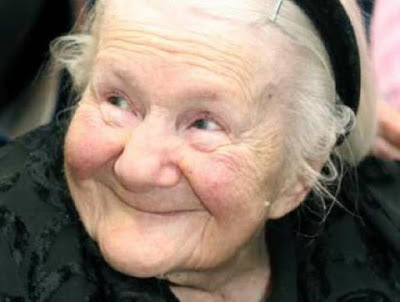
During the ceremony Elzbieta Ficowska, who was just six months old when she was saved by Irena Sendler, read out a letter on her behalf: “Every child saved with my help is the justification of my existence on this Earth, and not a title to glory,” Irena Sendler said in the letter, “Over a half-century has passed since the hell of the Holocaust, but its spectre still hangs over the world and doesn’t allow us to forget.”
This lovely, courageous woman was one of the most dedicated and active workers in aiding Jews during the Nazi occupation of Poland. Her courage enabled not only the survival of 2,500 Jewish children but also of the generations of their descendants.
The Nobel Prize recipient, Holocaust survivor Elie Wiesel, has dedicated his life to ensuring that none of us forget what happened to the Jews. He wrote:"In those times there was darkness everywhere. In heaven and on earth, all the gates of compassion seemed to have been closed. The killer killed and the Jews died and the outside world adopted an attitude either of complicity or of indifference. Only a few had the courage to care ..."

Clancy's comment: Courage in any form is extremely admirable. It should never be forgotten, especially today when the world appears to be so selfish.
I'm ...


Published on September 10, 2017 15:45
September 9, 2017
10 September 2017 - MACRO PHOTOGRAPHY

MACRO PHOTOGRAPHY
G'day folks,
Welcome to some more superb shots taken by clever photographers.













Clancy's comment: Not bad, eh?
I'm ...


Published on September 09, 2017 15:30



